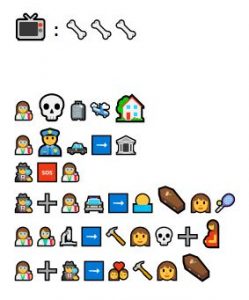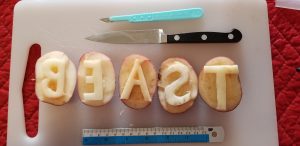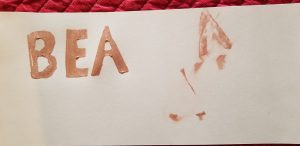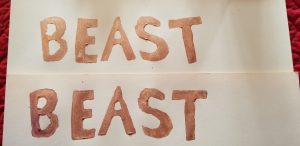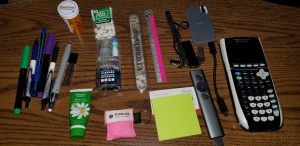I recorded my “story” using Read&Write for Google Chrome into a Google Doc.
So here’s a story about my last trip into the city Add to take my husband to the orthopedic surgeon for a check-up on his foot The check is a whole other story let’s just say he lost a battle with the tree in the summer I’ve definitely decided I prefer not to be in the city everything in the city seems totally crazy the people the traffic everything Drop my husband off at the clinic and decided I didn’t want to wait in the park Aid and pay crazy amounts of money to sit in the car the last time I was there I paid $12 for just a few hours I’m not sure why they charge so much to park at hospitals and medical clinics decided to take a drive in my head it off not quite sure where I was going I just knew I didn’t want to go to the mall especially now Turn off down the street I drank lots of times before I lived in the area when I was going to University to do my education degree I don’t remember it being that busy but maybe as I get older things are crazy or I don’t know what used to be a speed limit of 50 or 60 is now down to 40 which I thought was kind of crazy but I figured out that it really didn’t matter what the speed limit was because with the amount of traffic and late there’s no way you could drive more than 40 anywayPart of the adventure was when I decided to take a trip off of that main road I saw a sign for a park that I never noticed before maybe I just wasn’t paying attention close enough it took me down into ValleyOnly there is a creek and a park and walking trails picnic tables is been a Tranquility in the midst of all the insanity play spend some time going for a walk just standing on the bridge watching the creek and listening to the leaves in the Wind the Sun was shining you couldn’t hear the traffic except for one ambulance I heard probably on its way to the University Hospital and I found my way to a picnic table and satin could do some readingThis is the kind of atmosphere and we’re used to at home away from the city I thought about even leaving my cell phone in the car but I wanted to take some pictures I also needed to keep it handy just in case I got a text to go back and pick up my husband I had to do a double check to see if there was even cell service which is kind of crazy in the middle of the city that I was thinking that How to text and I head to head back into the insanity to go back to the clinic Which is a dislike the city I have to go back again next week this time I’m taking my dad to a different clinic but in the same area maybe I’ll get to explore the park by the creek again
How does the text deviate from conventions of written English?
This particular text has most of the words that were spoken. What is missing are all of the regular conventions that we use in writing English. There is no punctuation to break the text into sentences, all of the words run together. There are no paragraphs. Capitalization appears to be somewhat random. In places, capital letters mark the beginning of what would normally be the beginning of a new sentence; in other places, there is no explanation for their placement. My spoken story unfolded in time, whereas the written text unfolded in space. Read&Write translated time into space (Gnanadesikan, 2011).
What is “wrong” in the text? What is “right?”
As already mentioned, the regular conventions of written English are wrong. Also, the voice recognition did not get every single word correct. There were also some words that it did not detect. As for what is right, all of the words are spelled correctly, due to the built-in spell check, even if it is not the correct word.
What are the most common “mistakes” in the text and why do you consider them mistakes?
The most common mistakes are the ones identified as common conventions of written English. I consider them to be mistakes because in all of my education, I have learned that written text needs to follow certain rules. The text created as I spoke does not follow those rules.
What if you had “scripted” the story? What difference might that have made?”
A scripted story would have been in written format, so it would have included all of the text structures that this story is missing. I would have included punctuation, sentences, and paragraphs. As the script was read, it would have been easy to indicate to the program where to insert periods, commas, and new paragraphs. When I first opened Read&Write, I was notified that I could say “period” to end a sentence. As I spoke, though, I did not do that, since when you normally tell a story, you do not say “period” to indicate the end of a sentence. The script would have resulted in text that looked like we expected it should.
In what ways does oral storytelling differ from written storytelling?
In some ways oral storytelling is less formal than written storytelling. There are no conventions or rules for the format to follow. One is not concerned with proper grammar, spelling, or punctuation. In some ways, oral storytelling is more complex than written storytelling. Oral stories include nuances that are difficult to include in written language. As one tells a story, they may be including facial expressions, hand gestures, and expressive voices. Oral storytelling does not have the permanence of written storytelling. If nobody retells the story, it will be lost forever.
I live in a community where many people are Cree. “In the world of the northern Cree, orality systems govern all communication” (Weber-Pilwax, 2001, p. 152). History is passed down from elders to younger generations by way of storytelling. Keeping history alive relies on the younger people listening to and remembering the stories they are told.
References
Gnanadesikan, A. E. (2011).“The First IT Revolution.” In The writing revolution: Cuneiform to the internet, 25. John Wiley & Sons, 1-10. https://https://doi.org/10.1002/9781444304671.ch1
Weber-Pillwax, C. (2001). Orality in northern Cree indigenous worlds. Canadian Journal of Native Education, 25(2), 149-165. https://www.proquest.com/scholarly-journals/orality-northern-cree-indigenous-worlds/docview/230307021/se-2?accountid=14656
